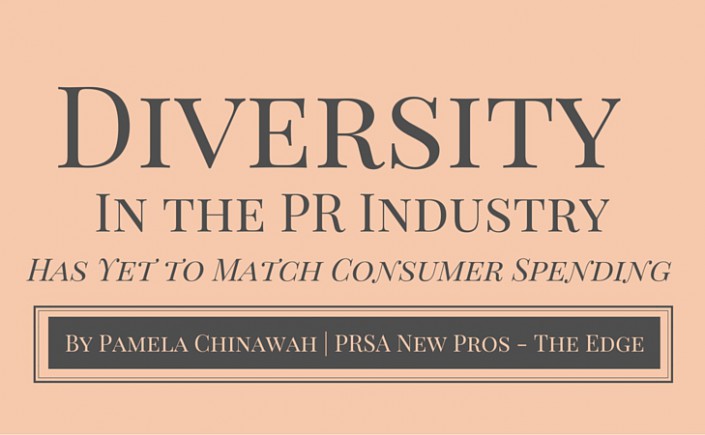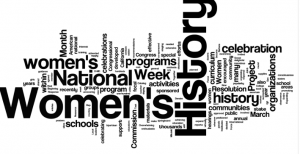Editor’s Note: The following post is part of the ongoing “What does diversity mean to you?” series on The Edge. This series provides insights into diversity and inclusion topics of value to new professionals. Specifically, this post is in honor of Women’s History Month. To help us champion diversity in PR and to write for the series, email our diversity liaison Henry Cervera Nique.
Over the past century, women have steadily taken the reigns in consumerism, becoming primary decision makers in household spending, as well as increasing spending power across the world. Although women have come to dominate purchasing decisions within the home, and have come to spend more money overall, the way brands have chosen to reach these consumers has changed relatively little since the mid-20th century.
The ways brands reach women continue to ride a predictable line of archetypes, stereotypes and tropes about womanhood and the desires which are met through consumer products. As far as women have come in the United States, the fact that women still struggle to achieve high ranks in the public relations and advertising industries means that consumer facing companies aren’t tapping into diversity in order to reach their target markets.
In 2013, the public relations industry showed men outnumbering women at the board level by 2:1. This is a stark number considering that, in 2015, only 40 percent of public relations practitioners were men, according to the U.S. Bureau of Labor Statistics.
It certainly isn’t impossible for men to effectively communicate with women, though the ability to realistically understand and reflect the pain points and solutions that women consider when making purchasing decisions is harder without women influencing decisions at the corporate table. That would explain why Jack Morton, a brand experience agency, found that 91 percent of women surveyed felt advertisers did not understand them.
In the United States, women are reported to contribute somewhere between $5-15 trillion in consumer spending and, according to Fleishman-Hillard, they are expected to control two-thirds of consumer wealth within the ten years.
With so much money on the table, do practitioners believe the ability to effectively target women is sustainable while consumer demographics turn so sharply away from the standard American default of middle-aged men?
To further complicate the issue, not only do women continue to increase their purchasing power in the U.S. economy, but women of color are quickly claiming a dominating place in the market. For instance, though black men continue to be economic leaders in the black community, black women are building power as they make impressive gains in education and entrepreneurship as the most college educated group in the country.
These changes should not be a surprise due to the changing demographics that show non-white ethnic groups comprising 36.5 percent of the population by 2020. However, even with concerted to increase Black and Latino employment in the industry, the two groups totaled only 19.2 percent of practitioners in 2014.
In an effort to match the new (but really not new at all) demographics of the United States, public relations practitioners must continue working to achieve a workplace balance that truly speaks to the diversity of target audiences being courted – if not for the well-being of society and inclusive culture, then at least for self-interest and the need for survival. The failure to adapt to the motivations of growing consumer groups by reflecting those groups within an organization is a mistake that could amount to self-destruction.
 Pamela Chinawah supports a range of food and beverage clients within an agency in Los Angeles, and continues to work independently in lifestyle brands and film. She is a graduate of California State University, Northridge, where she served as Chapter President of PRSSA. Pamela is admittedly obsessed with media and pop culture as well as politics and social equality. Her deepest passions explore how mass media affect societal values and behavior. Connect with Pamela on LinkedIn or Twitter.
Pamela Chinawah supports a range of food and beverage clients within an agency in Los Angeles, and continues to work independently in lifestyle brands and film. She is a graduate of California State University, Northridge, where she served as Chapter President of PRSSA. Pamela is admittedly obsessed with media and pop culture as well as politics and social equality. Her deepest passions explore how mass media affect societal values and behavior. Connect with Pamela on LinkedIn or Twitter.


 March is Women’s History Month. I wanted to get inspired, so I decided to read Sheryl Sandberg’s,
March is Women’s History Month. I wanted to get inspired, so I decided to read Sheryl Sandberg’s,  Emily Suied is a public relations professional in Chicago. She is a member of PRSA Chicago and serves on the Young Professional Network committee. Emily graduated from the University of Texas at Arlington and was the president of its PRSSA chapter. Connect with Emily on her
Emily Suied is a public relations professional in Chicago. She is a member of PRSA Chicago and serves on the Young Professional Network committee. Emily graduated from the University of Texas at Arlington and was the president of its PRSSA chapter. Connect with Emily on her  relations industry being dominated by woman, we celebrate educational and professional freedom for woman by applying the words of some of the most powerful and influential woman in history to our own career paths.
relations industry being dominated by woman, we celebrate educational and professional freedom for woman by applying the words of some of the most powerful and influential woman in history to our own career paths.